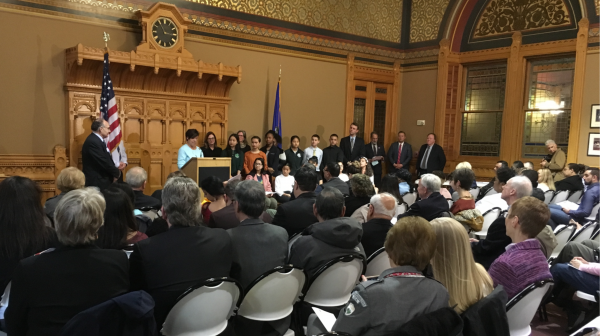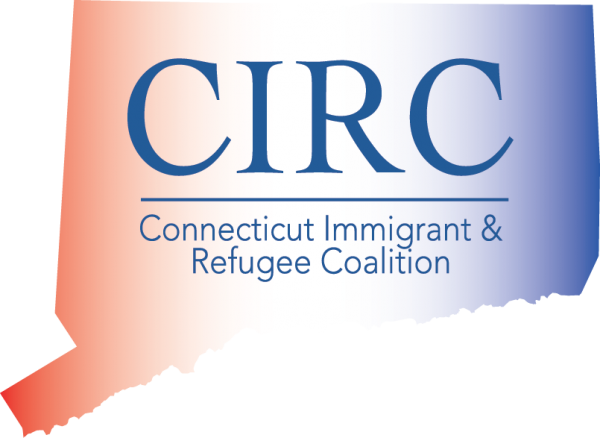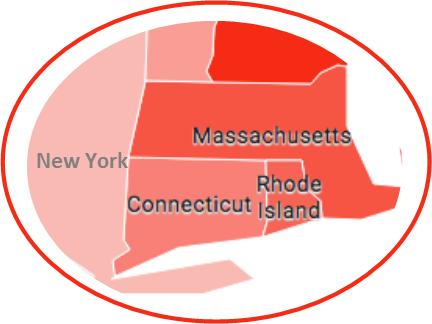Opioid Epidemic Evident in CT Communities Large and Small; Data Show Rapidly Growing Health Crisis
/In 2012-13, 111 of Connecticut’s 169 towns had at least one death attributable to opioids, and one city, Hartford, had more than 100 deaths that were caused by the drug. Just four years later, in 2016-17, 138 towns saw at least one death during the two-year period, an increase of 24 percent, and the number of cities with more than 100 deaths had quadrupled, as Hartford, Bridgeport, New Haven and Waterbury each saw the death toll climb past 100. A review of data from the Connecticut Medical Examiner by the Connecticut Data Collaborative found that “opioid deaths have doubled and tripled in some towns in Connecticut in only six years.” The analysis found that although Bridgeport, New Haven, Waterbury, and Hartford have the highest rates per population, “many smaller towns have seen their rates of death triple as well.”
 In comparing the average annual opioid-related death rates per 100,000 population in 2012-13, 2014-15, and 2016-17, the dramatic increases across communities statewide is quite evident. The data analysts point out that data are where deaths from 'any opioid' (meaning some type of opioid were found in the person) take place. Therefore, they explain, one would expect to see higher rates in places with large hospitals (hence high rates in cities). They add that one can also not discount that these places are also seeing higher rates among its residents.
In comparing the average annual opioid-related death rates per 100,000 population in 2012-13, 2014-15, and 2016-17, the dramatic increases across communities statewide is quite evident. The data analysts point out that data are where deaths from 'any opioid' (meaning some type of opioid were found in the person) take place. Therefore, they explain, one would expect to see higher rates in places with large hospitals (hence high rates in cities). They add that one can also not discount that these places are also seeing higher rates among its residents.
In Danbury, for example, the rate of deaths nearly tripled from 2012-13 to 2016-17, from 6.88 to 18.20. In Enfield, it more than tripled, from 2.01 to 6.70. In that northern Connecticut community, the rate translates to 9 opioid-related deaths during the two years of 2012-13 to 30 in 2016-17.
In Norwalk, the rate quadrupled from 2.57 in 2012-13 to 10.70 in 2016-17, when 25 people died from opioid-related causes. The rate in New Britain more than tripled from 8.78 to 29.65 – from 24 deaths over a two-year period to 81 in the same period four years later. In Hamden the number of deaths from opioid-related causes doubled from 8 to 16 in four years; in West Haven there were 7 deaths in 2012-13 and 29 in 2016-17.
 The Connecticut Data Collaborative has posted on its website an interactive series of state maps that allows visitors to compare the number of opioid deaths in every town in Connecticut in each of the three years. The maps indicate “the breadth of the problem” and “intensity of the issue.”
The Connecticut Data Collaborative has posted on its website an interactive series of state maps that allows visitors to compare the number of opioid deaths in every town in Connecticut in each of the three years. The maps indicate “the breadth of the problem” and “intensity of the issue.”
Earlier this year, Connecticut officials launched a statewide public awareness campaign aimed at reducing opioid misuse. The "Change the Script" campaign provides information on prevention, treatment and recovery provided by local health departments, prevention councils, healthcare providers, pharmacists, and other community partners and stakeholders.
The state departments of Mental Health and Addiction Services (DMHAS), Consumer Protection (DCP) and Public Health (DPH) are working together on the campaign, which grew out of the Governor's Connecticut Opioid Response (CORE) Initiative, a three-year strategy to prevent addiction and overdoses.
https://youtu.be/Uy3IVFjUAjE



 Sixth-graders from the Interdistrict School for Arts and Communication in New London were recognized for their project, “Community Faces-Humanizing the Immigrant Label,” parts of which were on display at the Capitol. The second group was Teens4Citizenship, a Hartford Public Library and Hartford Public Schools collaborative program. As "Citizenship Guides," these high school immigrant students support family and community members on the path to Citizenship and upon turning 18 pursue their own citizenship.
Sixth-graders from the Interdistrict School for Arts and Communication in New London were recognized for their project, “Community Faces-Humanizing the Immigrant Label,” parts of which were on display at the Capitol. The second group was Teens4Citizenship, a Hartford Public Library and Hartford Public Schools collaborative program. As "Citizenship Guides," these high school immigrant students support family and community members on the path to Citizenship and upon turning 18 pursue their own citizenship. Instead of honoring Christopher Columbus, the Indigenous Peoples’ Day recognizes Native Americans, who were the first inhabitants of the land that later became the United States of America. Advocates for the switch to Indigenous Peoples Day argue that Columbus did not “discover” America in 1492 but instead began the colonization of it.
Instead of honoring Christopher Columbus, the Indigenous Peoples’ Day recognizes Native Americans, who were the first inhabitants of the land that later became the United States of America. Advocates for the switch to Indigenous Peoples Day argue that Columbus did not “discover” America in 1492 but instead began the colonization of it. On campus will be:
On campus will be:



 Even in advance of the merger plan, the Board of Regents has been extending lower tuition offers in every direction, reaching out to students in Massachusetts, Rhode Island, New York and even New Jersey, making offers that the Regents hope will be tough to refuse.
Even in advance of the merger plan, the Board of Regents has been extending lower tuition offers in every direction, reaching out to students in Massachusetts, Rhode Island, New York and even New Jersey, making offers that the Regents hope will be tough to refuse.



 According to “The State of Languages in the U.S.: A Statistical Portrait,” Connecticut was one of seven states, along with New Jersey, Pennsylvania, Maryland, Vermont, New Hampshire and Wisconsin, where more than 30 percent of K-12 students were enrolled in language. As of 2014, only twelve states had more than one in four elementary- and secondary-school students studying languages other than English.
According to “The State of Languages in the U.S.: A Statistical Portrait,” Connecticut was one of seven states, along with New Jersey, Pennsylvania, Maryland, Vermont, New Hampshire and Wisconsin, where more than 30 percent of K-12 students were enrolled in language. As of 2014, only twelve states had more than one in four elementary- and secondary-school students studying languages other than English.
 Carrie Saxon Perry was the first black woman to be elected mayor of a major New England city – in 1987. Milner was the first black mayor in all of New England, elected in Hartford in 1981. There hasn’t been a black mayor leading the Capitol City since Saxon-Perry’s term ended in 1993.
Carrie Saxon Perry was the first black woman to be elected mayor of a major New England city – in 1987. Milner was the first black mayor in all of New England, elected in Hartford in 1981. There hasn’t been a black mayor leading the Capitol City since Saxon-Perry’s term ended in 1993. Across the country, Jacksonville, Memphis, Philadelphia and San Antonia had black mayors until recently, Governing reported. Detroit elected its first white mayor in 40 years in 2013. The nation’s largest cities – New York, Los Angeles and Chicago – have each has one black mayor, years ago. Atlanta elected a black female as mayor in a run-off election, winning with just over 50 percent of the vote.
Across the country, Jacksonville, Memphis, Philadelphia and San Antonia had black mayors until recently, Governing reported. Detroit elected its first white mayor in 40 years in 2013. The nation’s largest cities – New York, Los Angeles and Chicago – have each has one black mayor, years ago. Atlanta elected a black female as mayor in a run-off election, winning with just over 50 percent of the vote.




























